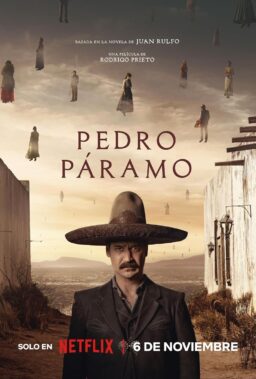The Cannes Classics sidebar is one of the hidden gems of this festival. With screenings usually nestled into the upper-floor Buñuel theatre, its slate provides a bit of intimacy and reflection away from the hullaballoo that characterizes the other competition and special presentation screenings. Started by current fest director Thierry Fremaux back in 2004, the section has been home to restorations of classic films, master classes with actors, directors and other filmmakers, and many documentaries about films and filmmakers, including Steve James' documentary about Roger, "Life Itself," that played back in 2014.
Lubna Playoust's "Room 999" premiered in that program this year, a sequel of sorts to a film that Wim Wenders made back in 1982 about the future of cinema. The original, running a brisk 45 minutes or so, had Wenders setup a 16mm camera in a hotel room along the Croisette and cajole a number of Cannes filmmakers to extoll their beliefs on the nature of cinema. Some, like Jean-Luc Godard and Steven Spielberg, provided a bit of world-weary optimism, while others decried the then-current state of cinema, believing it to be already dead.
Given the era in which they were speaking—one that saw the explosion of titles in the 1970s considered a golden age for the medium, with magnificent, experimental, immortal films like "Apocalypse Now" having won at Cannes only a few years prior—it's quite comical to hear the doom and gloom about a medium that would still go on to showcase immense films we continue to cherish to this day. While 1982 may have been comically premature to continue the clarion call about cinema's impending death, 2022, coming out of the COVID bubble and with TikTok as a festival sponsor, seemed a ripe time to revisit.
Palyoust recreates the same vignette in a slightly modernized room, the tube television replaced by a flatscreen, the camera now digital with an artificially restricted 12-minute running time for each auteur. The group of filmmakers selected runs a deeper gamut, quite literally articulating a changing complexion for whose films and which filmmakers become part of the conversation compared to forty years ago. The new doc begins with Wenders, and despite having had significant time to reflect on the deep questions about the art form's continuing relevance, he has surprisingly little to share.
Others, like David Cronenberg, are dismissive of the doom and gloom, seeing no difference between framing for the big screen and the small sets that directors now use in their "video village" to frame shots. Joachim Trier, Asghar Farhadi, Arnaud Desplechin, Nadav Lapid, Claire Denis, Davy Chou—while some are more eloquent than others, the result is a mix of ennui and optimism, generating little in the way of truly profound responses to the question. That's probably the most positive sentiment from the entire project: the more things change, the more they stay the same. And while it remains a key question about whether or not we'll be having this discussion four decades hence, it's almost comforting to know that no one has any bloody idea. The naysayers are no more correct than those blithely moving forward, making movies for us to enjoy in similar ways that we have for over a century.

The Classics program also tends to showcase documentaries about the work of certain actors or filmmakers, sometimes those forgotten, and "Anita" fits nicely into that category. Svetlana Zill and Alexis Bloom tell the story of Anita Pallenberg, described by Kate Moss as the "ultimate bohemian rock chick" who, among other talents, managed to be in intimate relationships with three members of The Rolling Stones.
Far more than the tale of a groupie, this is a film about the making of a muse. "Anita" shows an articulate, artistic woman who helped expand the minds of those around her and provided fashion and aesthetic education to a bunch of London boys thrust into the spotlight for playing blues rock with a bit of panache.
The film uses never-before-seen home footage to show the life of her and her famous partners, including Keith Richards, with whom she had several children. Her struggles with addiction are laid bare, and thanks to open-eyed reflections from those that knew her best, from friends to her children to the guitar legend himself, we are treated to a powerful portrait of a woman whose influence was immense but whose legacy has faded from the public imagination.
We see footage of Anita at Cannes accompanying Volker Schlöndorff to their premiere, footage of her as the baddie in cult classic "Barbarella" (Jane Fonda is coincidentally being feted at this year's festival), or her seductive role paired with Mick Jagger in "Performance." While there isn't much in the way of objective criticism about her contributions to cinema, these moments do hint at how her unique beauty and charisma charmed many during the time period.
Far more than a simple portrayal of someone tangential to fame, or even some middling cautionary tale about the effects of excess, "Anita" provides a deep, nuanced look at this individual, including her successes and failures. It's a deeply human look at a remarkable woman and how her story intersected with some of the period's most powerful and prolific artists.

Finally, there's "In the Rearview," Maciek Hamela's documentary that plays as part of ACID, the indie-film sidebar with more than a few cinematic treats that sometimes go under the radar here in Cannes. Hamela volunteered to shuttle Ukrainians from one part of the country to another, joining volunteer organizations that provided a lifeline for the massive shift in population caused by the Russian invasion. With a series of cinematographers as co-drivers, his car provides a confessional space where these individuals tell their stories.
Some tales are truly harrowing, and some are uplifting; some moments concern things as banal as an escaping cat needing to relieve itself or the everyday Tetris-like challenge of getting all the luggage to fit in the back of a vehicle. Contrast this to heading in one direction only to have a bridge recently blown up, the bypass road a mucky mess where even army vehicles are left stuck in the mire.
The faces change throughout, but the sense of both relief and pain you can see expressed is shared. There are young children now witness to grave horrors who can't quite make sense of it all, and more elderly passengers who know deeply how traumatic this Exodus truly is. Throughout, Hamela stays out of the story for the most part, allowing his passengers to drive much of the narrative and to truly become the focus of this subtle yet effective film.
As a mode of witnessing the horrors of war, the documentary is both subtle and remarkable, and because of its carefully honed editing and simplistic yet effective structure, we're granted unique insight into the lives and stories of these individuals too easily thought of as background players in a larger geopolitical struggle. "In the Rearview" lets us see clearly what's so often obscured. Thanks to the bravery of drivers and passengers alike, we vicariously live through their experiences and appreciate all that's taking place in the brief moment of the ride. When they exit, a new group enters with their own unique, yet sadly similar, stories of struggle.












